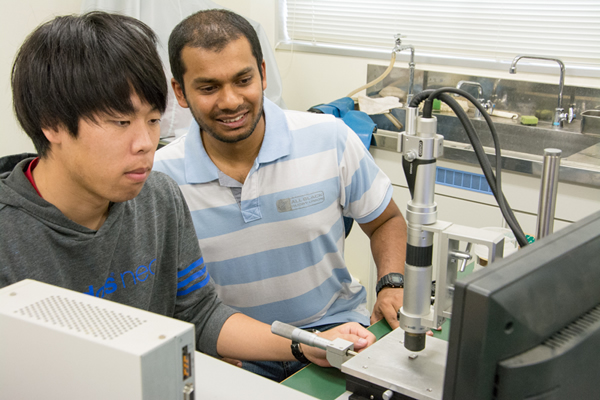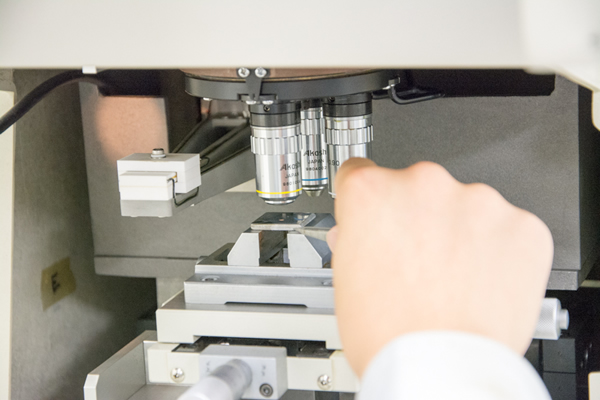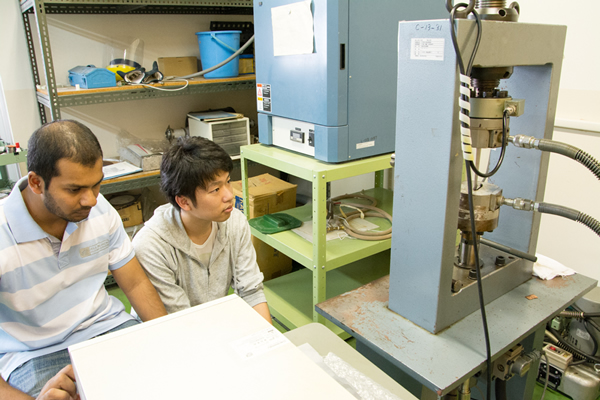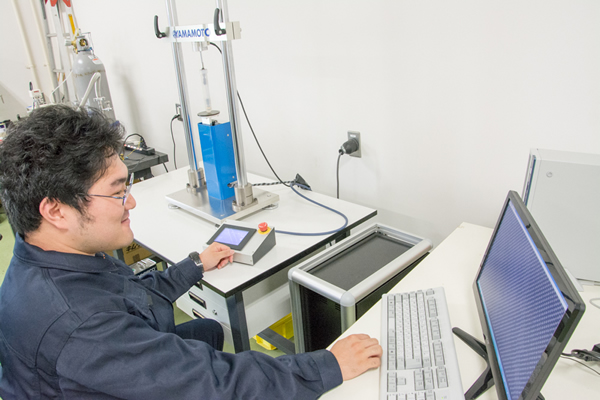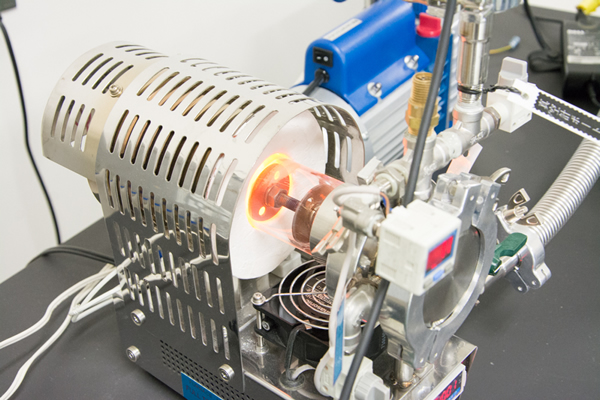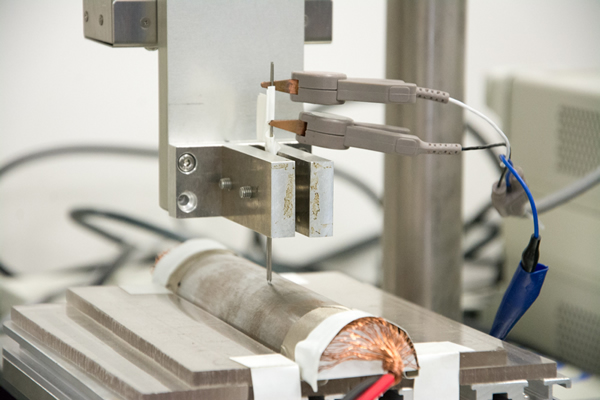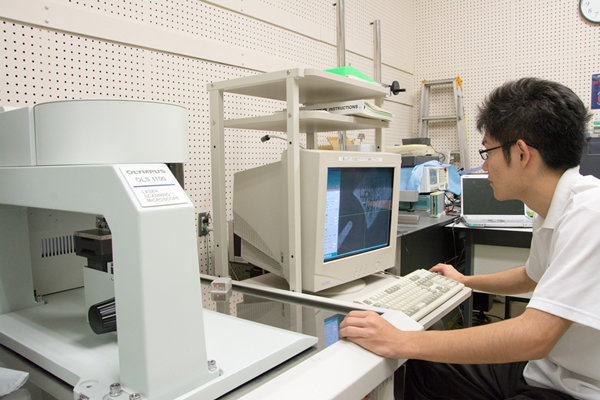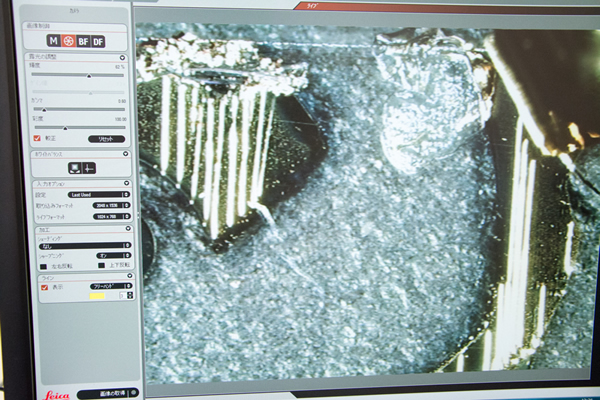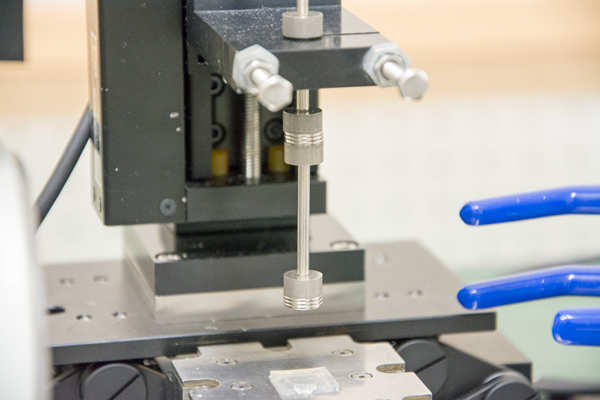Applied Solid Mechanics
The things that exist around us are made of "materials." In the old days, stone and wood were considered to be typical materials but now a wide variety of metal materials such as steel, aluminum alloys, and titanium alloys, as well as ceramics and composite materials support our lives. However, these materials can easily break if used incorrectly resulting in machine breakdowns or accidents. Our laboratory researches material fractures and its precursors such as damages through various analytical instruments, including electron microscopes and computer analysis.
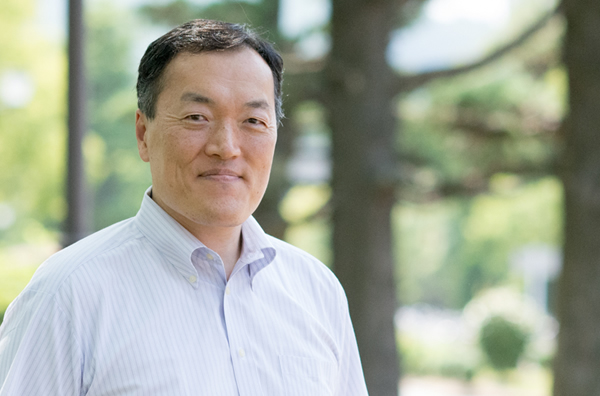
Naoya TADA
Professor
Non-uniform microscopic deformation and height distribution of metals
Metals are composed of lots of crystals of mm size and show non-uniform deformation under a uniform loading. The microscopic non-uniformity reveals as a non-uniform height distribution on the material's surface. The very small undulation is evaluated based on the Digital Height Correlation Method (DHCM) and the localized deformation and related fracture are investigated.
Evaluation of damage and strength of electric components
Electric devices like smart phones are made of various kinds and sizes of thin wires, thin films, and solder joints. They are special materials from the viewpoint of very small sizes and being highly influenced by surface and interface. Their deformation and strength are evaluated and the results contribute to the development of advanced electric devices.
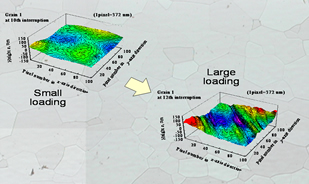
Fig.1 Change in very small undulation on the surface of pure titanium and the appearance of slips.
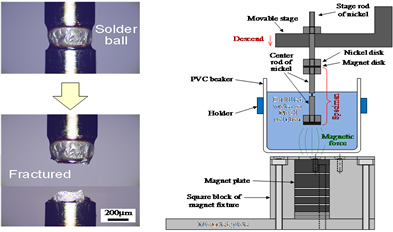
Fig.2 Evaluation of joint strength of lead-free solder in liquid using non-contact type magnetic force testing machine.
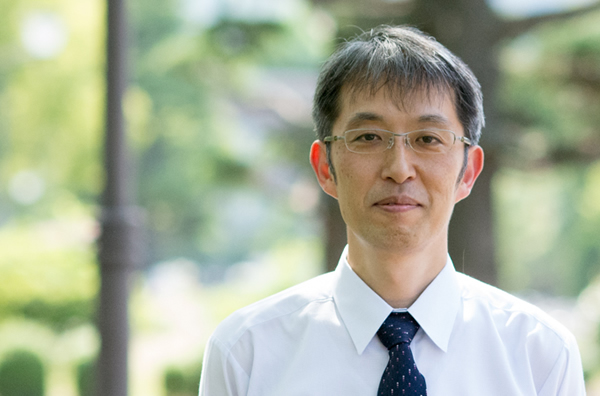
Takeshi UEMORI
Associate professor
Research on numerical modeling of elasto-plastic deformation behavior of sheet metals
High tensile strength steel sheets are utilized for car bodies for the view point of the improved fuel efficiency and collision safety.However the materials show the large springback deformation after press forming processes. The aim of my research is to develop the high accurate simulation tool for solving the above mentioned problem.
Research on crystal plasticity theory
Study of crystal plasticity theory is conducted in my research for accurate predictions of polycrystalline metals. I'm conducting the finite element calculations based on the above mentioned theory to reveal the deformation behaviors of metals at the mesoscale.
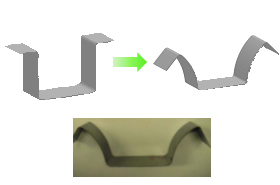
Fig.1 Prediction of springback on the hat bending process.
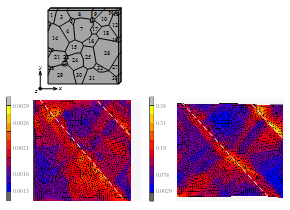
Fig.2 Simulated results of tensile deformation for polycrystalline pure taitanuim sheet metal.
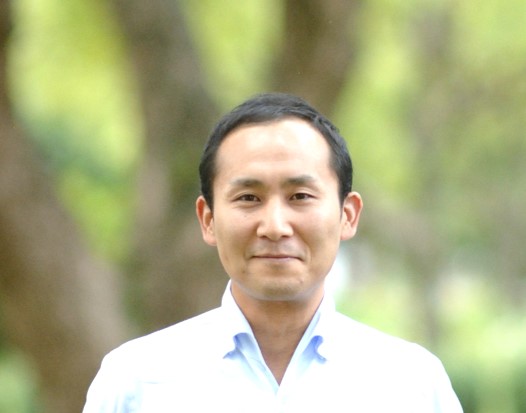
Junji SAKAMOTO
Assistant Professor
Clarification of fatigue fracture mechanism for strength evaluation and material processing
It is well known that more than 80% of the cause of fracture of mechanical components is fatigue fracture. Fatigue fracture is caused by propagation of cracks which are initiated in the material. Therefore, to clarify the mechanism of fatigue fracture, the behavior of the cracks in the material are analyzed in detail. Moreover, on the basis of the mechanism, the fatigue strength evaluation and material processing have been conducted.
Evaluation of vibration fatigue strength
Vibration fatigue is more complicated than normal fatigue because of the possibility of resonance and irregularities of strength and direction of load. To utilize the machine subjected to vibration safely and effectively, evaluation of vibration fatigue has been conducted.
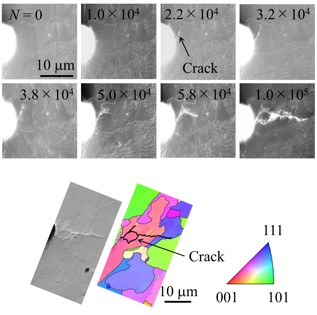
Fig.1 Analysis of fatigue crack behavior using a plastic replica method and EBSD.
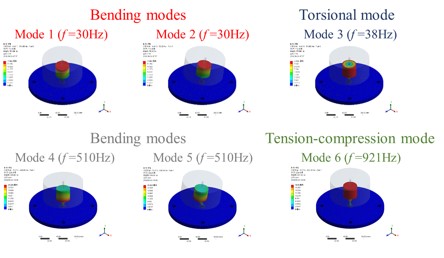
Fig.2 Identification of natural vibration mode using finite element analysis.

